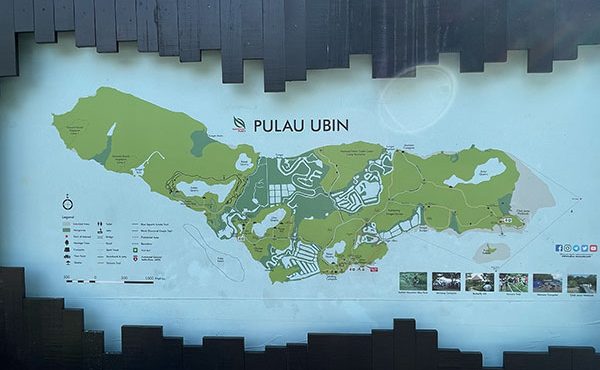
In a visit to Tokyo last month, I encountered what has to be the most amenity-rich streetcar stop that I’ve ever seen.
One can think of it as an alternative transit universe to North America, where private railway companies are still viable and innovation is spurred on through competition for passengers. It is a model that did exist in North America, but died out with the rise of the automobile, especially after World War II. If the price of fuel gets high enough, might we see a return to the private railway model? In the following weeks, TransitFan will show you how it works in Japan.
Tokyo has great examples of integrated streetcar stops. Yes, there is a streetcar line in Tokyo. One, to be exact: The Arakawa Line, a 12.2 km route running through the northern part of the city. It is the last remaining line of an extensive network that at its peak in the 1940s reached 41 routes and 213 kilometres of track. As in Vancouver, streetcars lost the battle to the private car, and the lines were converted to bus routes or, in many cases, subway routes. The Arakawa Line survived mainly because it runs on its own right-of-way for most of its route, so its streetcars aren’t slowed down by traffic.
The photos are of Koshinzuka (Koh-SHEEN-zoo-kah) station on the Arakawa Line, very close to Otsuka station on the Yamanote loop line. Although it is not a bus stop, it is everything that a good bus stop could be. The list of what is available at this small stop is pretty amazing, and makes TransitFan wonder why it couldn’t be replicated on a wider scale.
1. Shelter – A wide overhang covering the full length of the platform and almost flush with the neighbouring building.
2. Barrier-free Access – An easy slope up to the platform; boarding is at-grade. Note also the tactile guide strips for the visually impaired. The yellow strip guides the passenger to the platform, while the white and black strip marks the edge of the platform. A speaker (seen in Photo 3) announces when the streetcar is arriving.
<!–[if !supportLists]–> 3. <!–[endif]–>Notice Board –A community notice board can be seen on the right side of the adjacent photo. If notice boards existed at transit stops in Vancouver, perhaps event organizers wouldn’t have to use the nearest pole to promote their events.
3. <!–[endif]–>Notice Board –A community notice board can be seen on the right side of the adjacent photo. If notice boards existed at transit stops in Vancouver, perhaps event organizers wouldn’t have to use the nearest pole to promote their events.
<!–[if !supportLists]–>4. <!–[endif]–>Washrooms – The small brick building with a sunroof (!) is a public washroom.
<!–[if !supportLists]–>5. <!–[endif]–>English language signage – Even at a small station like this which serves mainly Japanese passengers, all important information is also in English.
<!–[if !supportLists]–>6. <!–[endif]–>Fare information – Photo 3 reads “160 Yen ($1.60) for adults and 80 Yen for children”.
<!–[if !supportLists]–>7. Bench – Departures are frequent enough that one bench is sufficient.
8. Emergency telephone – clearly seen on the photo below.
 9. <!–[endif]–>Electronic signage – Can be seen at the top of the photo here. Information is shown first in Japanese, then English.
9. <!–[endif]–>Electronic signage – Can be seen at the top of the photo here. Information is shown first in Japanese, then English.
<!–[if !supportLists]–>10. <!–[endif]–>Food & Drink – This is probably the coolest aspect of the station for TransitFan. As seen in the photo below, the bottom floor of the building next to the station is used by a restaurant (on the right) and a pub (on the left). The only entrances are those facing the platform. As can be seen in Photo 3, the establishments are almost part of the platform.
<!–[if !supportLists]–> 11. <!–[endif]–>Next station signage – Seen above the restaurant entrance in photo on the left.
11. <!–[endif]–>Next station signage – Seen above the restaurant entrance in photo on the left.
<!–[if !supportLists]–>12).<!–[endif]–> Lighting – Fluorescent lighting hangs from the shelter. The restaurant has also provided outdoor lighting, to complement the light emanating from the interior of the shop.
<!–[if !supportLists]–>13). <!–[endif]–>Building integration – By converting the bottom floor into food and drink establishments, what could be just a blank wall facing the platform has been turned into something much more welcoming. The building also provides a windbreak for the station platform.
<!–[if !supportLists]–>14. <!–[endif]–>Unimpeded sightlines – One can see the streetcar stopping at the next station down the line.
<!–[if !supportLists]–> 15. <!–[endif]–>Timetable – Every station on the Arakawa Line has a timetable showing departures for every day of the week in large font. Trains arrive every 5-6 minutes during the peak hours of 10am to 3pm.
15. <!–[endif]–>Timetable – Every station on the Arakawa Line has a timetable showing departures for every day of the week in large font. Trains arrive every 5-6 minutes during the peak hours of 10am to 3pm.
***
John Calimente is the president of Rail Integrated Developments. He supports great mass transit, cycling, walking, transit integrated developments, and non-automobile urban life. Click here to follow TheTransitFan on Twitter.

